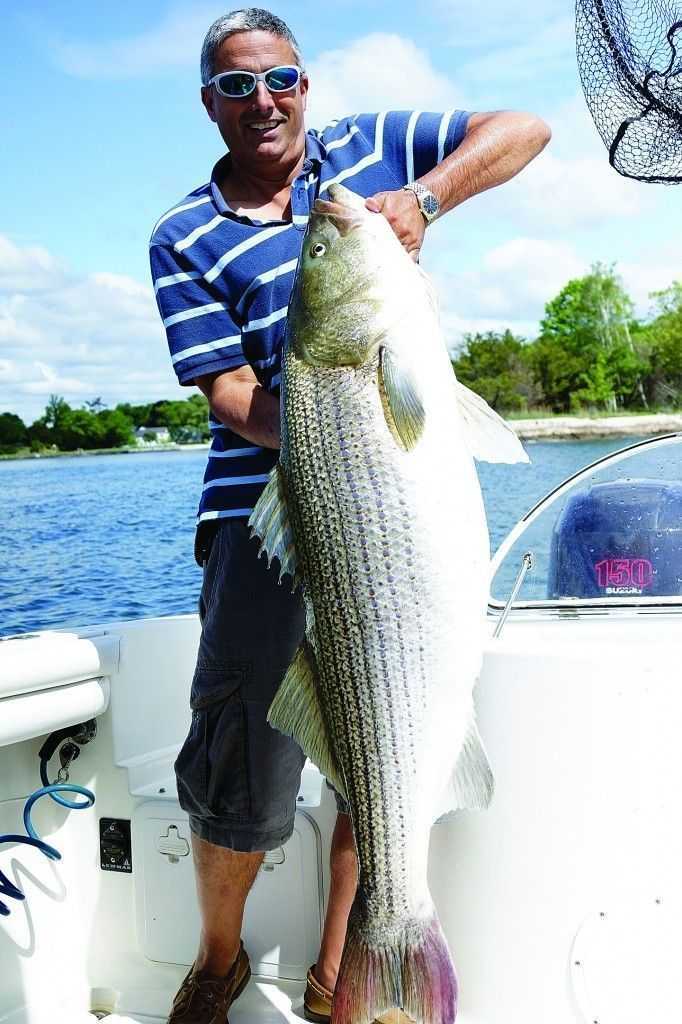
Striper fishing my home waters of the Western Long Island Sound well over 100 times a year most often starts out the same way for me each time. I board my 25-foot Sea Fox and head out of the Mianus River in Cos Cob into Captain’s Harbor and points beyond.
Shallow-water striper fishing, within 50 feet of jetties, rocky outcroppings and at the mouths of rivers and harbors, is where the majority of my striper fishing takes place. Having landed and released more than 1,300 stripers so far in these waters, I’ve to come to enjoy shallow-water striper action the most. The hits are frequently explosive. The challenge of working the boat into tight spots and then maneuvering hooked striper around structures during the fight all adds up to a heart thumping loud and fast. Don’t get me wrong, I do my share of deeper-water striper fishing, both trolling and bait fishing, and enjoy that a great deal as well.
Fresh bait will often tip the scales in your favor. As I head away from the dock, I’m already searching for bait before the sun rises by scanning the surface with my binoculars for the telltale signs of pods of bunker splashing on the surface. Diving cormorants also indicate the bunker are in tight pods below the surface. My fish finder is another means to find the pods when they’re not visible by eye. Using a combination of these methods, it’s usually not long before I complete the first order of business, loading up my baitwell with bunker.

Once my baitwell is loaded, I set up in a few of my favorite spots along the Byram and Greenwich harbors, shorelines and islands and start chopping up and tossing a steady stream of freshly chunked-up bunker overboard to get a bit of a chum line going. Then I set out two rigs baited with live-lined bunker and two rigs baited with bunker heads. By tossing them out in all directions, I’m able to cover an area of about 100 feet in diameter. Most often, within fifteen minutes, if there are any stripers in the area, one or more reels start screaming.
If no stripers gulp down any of the baits, the anchor comes up and I’m off to one of my other favorite spots where I go through the same process. In a matter of an hour, I hit three or four spots. If none of those shallow-water spots produce, heading out to deeper waters is the next step. Out deeper, depending on what I see, I’ll either set out some live and chunked bunker (if pods of bait are in the area) or start trolling a pair of bunker spoons to cover a wider area. Trolling deep can get you into some of the biggest stripers the Western Sound has to offer.
by Richard DeMarte
[easy-social-share]